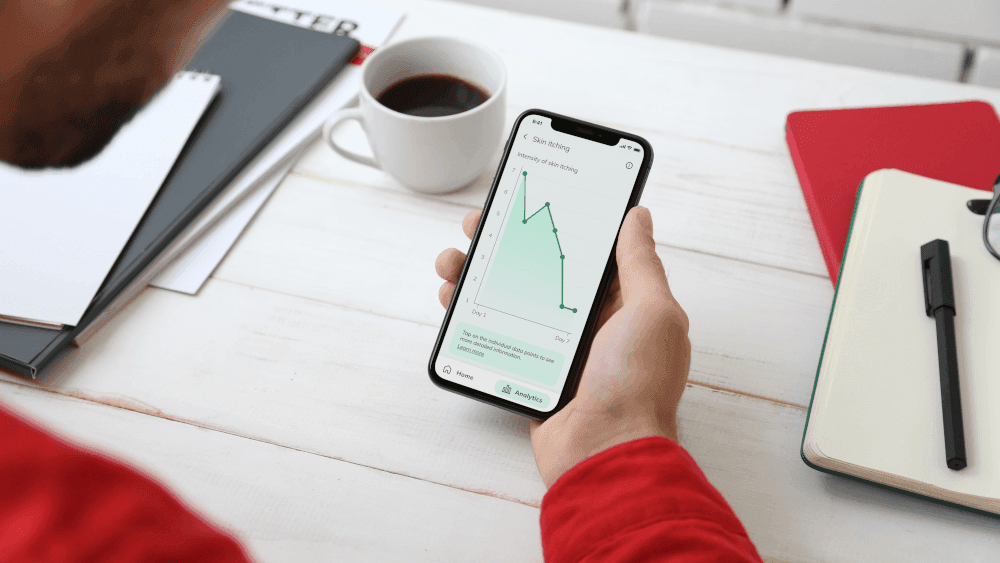Challenges in Using of Real-World Data in Healthcare

DATE
February 07, 2022
AUTHOR
Dragan | Co-Founder & CTO
With the ongoing digitalization of the healthcare sector, Real-World Data (RWD) is becoming increasingly important. Contrary to findings from randomized clinical trials (RCTs), for example, this is data from hospitals and doctors’ practices that is routinely collected. Real-world evidence (RWE), i.e. clinical evidence on the use, benefits and risks of a medical product or drug in everyday practice, can be derived from their analysis. This complements the results of “traditional” clinical trials and allows for a deeper understanding of the efficacy and optimization potential of a therapy.
Those looking to use Real-World Data in RWE studies, however, currently face three challenges: fluctuating data quality, low internal validity, and data privacy issues. How to best deal with these obstacles and use them as opportunities in the context of clinical trials? Learn this and more in this article.
What’s it about?
1. Fluctuating data quality
2. Data privacy issues
3. Low internal validity
1) Fluctuating data quality
Real-world data can be drawn from a wide variety of sources, including
- medical databases and disease registries,
- electronic health records (EHRs),
- surveys of patients or physicians (e.g., using ePRO),
- health insurance billing or mobile devices such as medical wearables.
Since data quality can vary greatly depending on its origin, it’s important to assess exactly what level of data quality is required for the study in question. If the necessary standard is not achieved for the specific use case, the robustness of the data can be improved through various approaches. For example, one can create financial, as well as non-financial, incentives for higher quality data entry. E.g., the set-up can be designed so that downstream data enrich the original data source, and in this way, patients and treatment providers benefit directly from their original detailed input.
Since RWD are predominantly unstructured data sets, natural language processing (NLP) tools can be used to enable comprehensive text mining and terminology recognition. Generally, the use of platform solutions is recommended, which enable a fast update of data sets – and thus a very speedy and flexible analysis.
Climedo Connect: Bridging the Gap between Clinical Research and Real-World Evidence
Watch the recording of our Climedo Connect Webinar
Dr. Ralph Markus Wirtz (Stratifyer) shared some exclusive insights into adaptive trials designs and how to effectively use Real-World Evidence (RWE) and multi-dimensional registry data for clinical trials.

2) Data privacy issues
The use of Real-World Data requires clear, transparently communicated standards that protect patients’ privacy. These are necessary because the benefits of RWD can hardly be realized without data linkage and thus unique patient identification. The OECD (Organization for Economic Co-operation and Development) has identified eight critical measures for secure use of sensitive Real-World Data that can serve as guidance for all stakeholders. These include:
- open and transparent public communication
- the accreditation or certification of health data processors and
- data de-identification procedures and data security practices consistent with legal requirements and public expectation, which at the same time do not compromise the use of RWD.
In the healthcare sector and beyond, it is important to remember that data misuse can be triggered by two different factors. The danger comes not only from criminal cyberattacks, but also from a lack of care by employees in their day-to-day handling of sensitive information. Therefore, robust IT security must be in place to address both. Electronic data capture platforms with highly security features can make an important contribution here.
3) Low internal validity
Once the two crucial prerequisites – data quality and the necessary data protection – have been ensured, another challenge awaits: selection bias. Real-world data are very representative, as they usually come from larger and more diverse patient populations than data from clinical trials with their narrow selection criteria. At the same time, however, they often have low internal validity. This is because they are not collected in a controlled and, if necessary, blinded environment.
If the data are used in the context of a non-randomized RWE study, there are various possibilities to minimize the bias of the results. Based on patient stratification or matching, the study design can be modified to control for known differences between patients. For unknown confounders, statistical methods can be used to provide a more accurate estimate of the treatment effect. In addition to panel data models, the instrumental variable method is used particularly often.
Conclusion: Realizing the potential of RWD through greater data quality, protection and validity.
With increasing digitalization in the healthcare and life science sectors, and an additional boost by the pandemic, we’re gaining access to more and more real-world data. Interest in its use is increasing, as experts are recognizing the great potential of RWE studies. For example, as a supplement to “traditional” clinical trials and also to correct their results, should treatment experience differ significantly in practice.
Those who master the challenges mentioned here have already paved the way towards using RWD efficiently. Digital tools can prove extremely helpful in this respect, as they enable simple and secure data acquisition while also facilitating its analysis.
Want to use RWD for your clinical research and benefit from the advantages of digital solutions? Then feel free to contact us or arrange a software demo. We would be happy to help you take your clinical research to the next level with the help of RWD!






